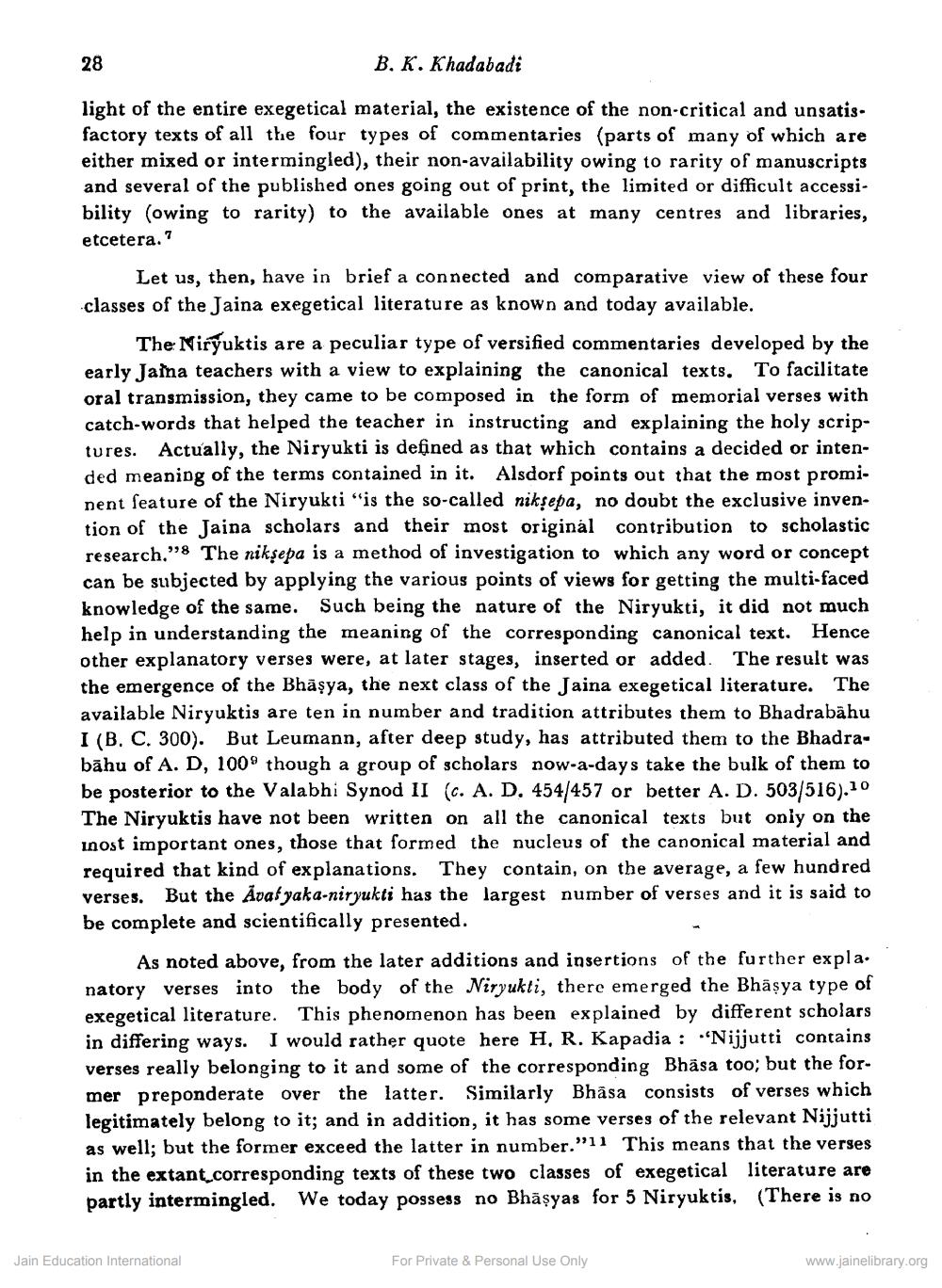Book Title: Reflections on the Jaina Exgetical Literature Author(s): B K Khadabadi Publisher: Z_Aspect_of_Jainology_Part_3_Pundit_Dalsukh_Malvaniya_012017.pdf View full book textPage 2
________________ 28 B. K. Khadabadi light of the entire exegetical material, the existence of the non-critical and unsatisfactory texts of all the four types of commentaries (parts of many of which are either mixed or intermingled), their non-availability owing to rarity of manuscripts and several of the published ones going out of print, the limited or difficult accessibility (owing to rarity) to the available ones at many centres and libraries, etcetera.? Let us, then, have in brief a connected and comparative view of these four classes of the Jaina exegetical literature as known and today available. The Niryuktis are a peculiar type of versified commentaries developed by the early Jaina teachers with a view to explaining the canonical texts. To facilitate oral transmission, they came to be composed in the form of memorial verses with catch-words that helped the teacher in instructing and explaining the holy scriptures. Actually, the Niryukti is defined as that which contains a decided or intended meaning of the terms contained in it. Alsdorf points out that the most prominent feature of the Niryukti "is the so-called niksepa, no doubt the exclusive invention of the Jaina scholars and their most original contribution to scholastic research."8 The niksepa is a method of investigation to which any word or concept can be subjected by applying the various points of views for getting the multi-faced knowledge of the same. Such being the nature of the Niryukti, it did not much help in understanding the meaning of the corresponding canonical text. Hence other explanatory verses were, at later stages, inserted or added. The result was the emergence of the Bhāşya, the next class of the Jaina exegetical literature. The available Niryuktis are ten in number and tradition attributes them to Bhadrabahu I (B. C. 300). But Leumann, after deep study, has attributed them to the Bhadrabāhu of A. D, 100% though a group of scholars now-a-days take the bulk of them to be posterior to the Valabhi Synod II (c. A. D. 454/457 or better A. D. 503/516).10 The Niryuktis have not been written on all the canonical texts but only on the inost important ones, those that formed the nucleus of the canonical material and required that kind of explanations. They contain, on the average, a few hundred verses. But the Avat yaka-niryukti has the largest number of verses and it is said to be complete and scientifically presented. As noted above, from the later additions and insertions of the further expla. natory verses into the body of the Niryukti, there emerged the Bhäsya type of exegetical literature. This phenomenon has been explained by different scholars in differing ways. I would rather quote here H, R. Kapadia : "Nijjutti contains verses really belonging to it and some of the corresponding Bhäsa too; but the former preponderate over the latter. Similarly Bhāsa consists of verses which legitimately belong to it; and in addition, it has some verses of the relevant Nijjutti as well; but the former exceed the latter in number."11 This means that the verses in the extant corresponding texts of these two classes of exegetical literature are partly intermingled. We today possess no Bhäşyas for 5 Niryuktis, (There is no Jain Education International For Private & Personal Use Only www.jainelibrary.orgPage Navigation
1 2 3 4 5 6 7
